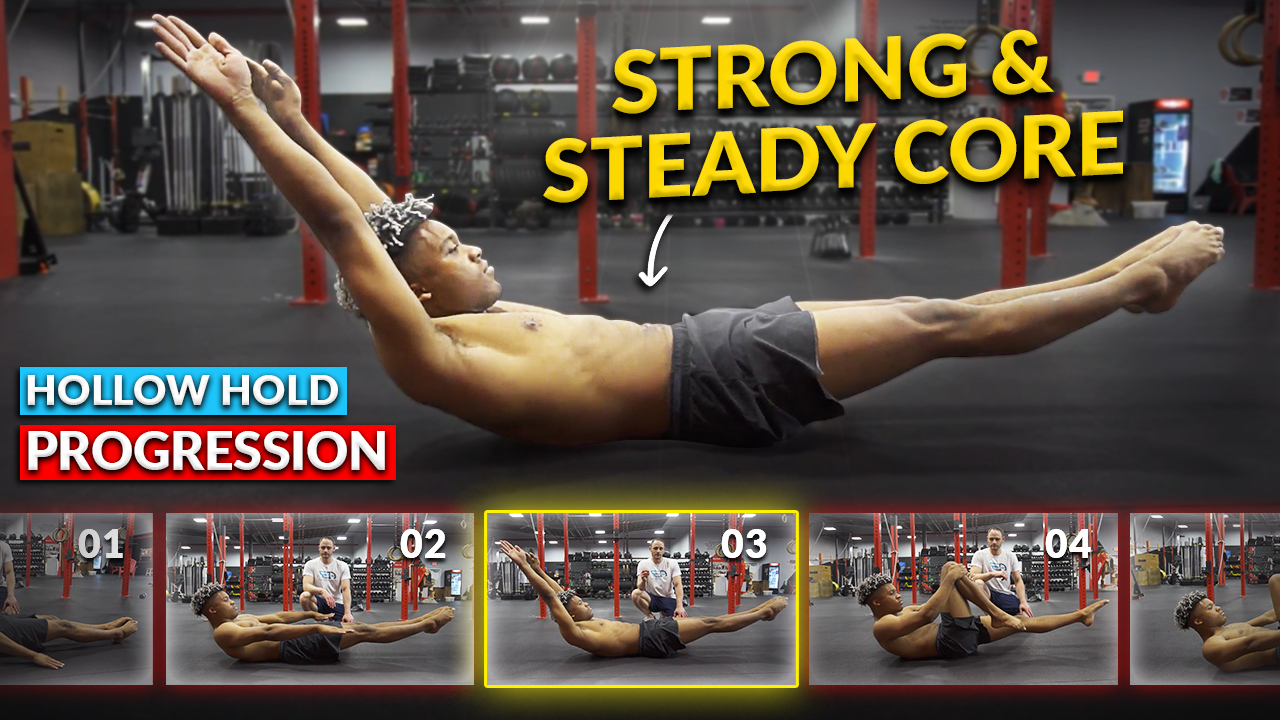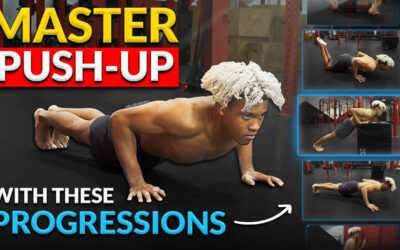Have you ever desired a core that radiates strength and resilience?🧐
Building a robust core isn’t just about crunches and sit-ups—it’s a journey of gradual progression, a testament to the body’s ability to adapt and strengthen. At the heart of this journey lies the hollow hold—a foundational exercise revered in the realm of calisthenics for its transformative impact.
The hollow hold represents more than a simple workout; it embodies a systematic approach to core mastery.
👉In this article, we will dive into the holistic art of sculpting strength, one step at a time, and embrace the transformative power of the hollow hold.
🤔What is Hollow Hold?
A hollow hold is an exercise commonly used in fitness and gymnastics to strengthen the core muscles. It involves lying on your back and lifting both your legs and upper body off the ground, creating a “U” shape or a hollow position.
The hollow hold is effective for targeting🎯 the rectus abdominis, transverse abdominis, and other muscles in the core. It helps improve core strength, stability, and body awareness. Progressions, like the rocking motion mentioned in the previous conversation, can be added to make the exercise more challenging.
Check out our article on Mastering the Perfect Hollow Hold ⏬
✨14 Progressions to Hollow Hold
The hollow hold is a fundamental core exercise designed to target various abdominal muscles, enhance stability, and improve overall body control.
As we delve into each progression, you’ll discover how to systematically advance from foundational static holds to dynamic movements, gradually intensifying the challenge for your core muscles.
1. 🔥 Lower Body Lifts (Arms Down)
The journey towards mastering the hollow hold begins with a foundational exercise known as lower body lifts on the elbows. This initial step isolates the lower body, focusing on core engagement and control.
In this progression, the emphasis lies in the setup—leaning back with forearms on the ground, concentrating solely on engaging the lower body. Before any movement occurs, activating the core becomes crucial, ensuring stability and control throughout.
The movement itself is simple yet impactful: lifting the legs a few inches off the ground, holding briefly, and then lowering back down. It’s a repetitive process aimed at establishing a foundation of control and endurance.
The goal is gradual progression—starting with fewer repetitions and gradually working up to a challenging set of 30. This target signifies a milestone in muscular endurance, a testament to the body’s ability to adapt and strengthen over time.
This foundational phase isn’t just about lifting legs; it’s about cultivating the core’s endurance and control. Each lift and hold, each repetition, lays the groundwork for a stronger, more resilient core—a crucial requirement for advancing through the stages of the hollow hold progression.
2. 🔥 Upper Body Lifts
The next step in the hollow hold progression involves upper body lifts with arms down and close to the thigh. This exercise focuses on the upper body while lying in a fully stretched position.
It resembles a crunch, transitioning from a straight to a slightly flexed position. The goal is to perform 15 to 20 reps, emphasizing core engagement and endurance while targeting the upper body.
This phase builds on core control established in previous progressions, preparing for the full hollow hold position.
3. 🔥 Elongated Upper Body Lifts (Arms Overhead)
This progression in mastering the hollow hold involves elongating the position by raising the arms overhead. This phase introduces a crunch-like movement but with the arms extended above the head while maintaining the body’s stretched position.
The focus here remains on the upper half of the body. While lying in the outstretched position, the objective is to curve the upper body, ensuring the legs and lower back maintain contact with the floor.
By lifting the shoulders off the ground and curving the upper body, a hollowed shape is achieved, emphasizing engagement in the upper torso.
The challenge lies in maintaining contact between the lower body and the floor while curving the upper body into a hollow shape. This phase aims to reinforce the engagement of the core and upper body muscles necessary for the full hollow hold position.
By mastering this movement, you can develop the foundational strength and control required to progress towards the complete hollow hold—a position that demands both upper and lower body engagement while sustaining the hollow shape throughout the exercise.
4. 🔥 Hollow Lifts and Hold with Arms Down
In this progression, termed “hollow hold lifts and hold with arms down,” the exercise begins in the outstretched position. The arms remain positioned low by the thighs as both the upper and lower body are lifted into the hollow hold.
The goal is to sustain this hold for five seconds before gently relaxing back down to the ground and repeating the movement.
The key focus here is on maintaining a curved body shape, ensuring the legs hover about five to six inches off the ground while maintaining full-body tension throughout the exercise.
This phase significantly engages the core, emphasizing the endurance required to sustain the hollow hold position.
5. 🔥 Hollow Lifts and Hold: Arms Overhead
In this progression, you’ll elevate the challenge by extending the hollow lift and hold. Begin by assuming a more stretched-out position, extending your arms overhead. This adjustment intensifies the exercise and demands greater engagement from your core.
Your goal remains consistent: lift into the hollow hold, elongating your body fully, and sustain this position for five seconds before repeating the movement. It’s crucial to contract your core and abs before lifting off the ground, ensuring your lower back maintains contact with the floor throughout.
Maintaining proper form is vital. If you find your lower back coming off the ground or compromising your form due to fatigue, it’s wise to regress to a previous step. Mastering each stage is essential for safety and effectiveness, preventing potential injury while strengthening your core muscles effectively.
6. 🔥 Hollow Tucks One Leg Extend (Grab Knee)
Starting in the tucked position by grabbing both knees, extend one leg while holding the other knee with both hands for a brief moment.
Transition into the hollow hold by elongating your body while bringing the extended leg back in, alternating between the hollow hold, and tucking one leg in.
The sequence involves alternating between the hollow position and having one leg tucked toward the chest.
This alternating movement challenges core stability and control while engaging different muscle groups. The transition from tucked to hollow and vice versa demands coordination and strengthens core muscles more dynamically. Mastering this progression enhances core strength, control, and agility necessary for advancing further in the hollow hold series.
7. 🔥 Hollow Tucks One Leg Extend (Hands Free)
Advance the progression, with the hands-free tucked hollow with one leg extended. Commence in the tucked position, this time without using your hands for support.
From this hands-free tuck, extend one leg while maintaining the tucked position, challenging your core stability and balance. Hold this extended leg position for a few seconds before alternating to the other leg.
This exercise involves alternating leg extensions without the aid of your arms to hold the bent leg.
Performing this progression sans hand support intensifies the challenge, requiring increased core engagement for stability. It demands enhanced control and balance while alternating between leg extensions, contributing to a more comprehensive development of core strength and stability crucial for mastering the hollow hold.
8. 🔥 Hollow Tucks Both Legs Extended
This progression introduces the tucked hollow hold with both legs extended, emphasizing the hands-free technique. Start in a tucked position without using your hands for support.
From this tucked, hands-free stance, elongate both legs, transitioning into the full extension of the hollow hold, challenging your core stability and strength. Return to the tucked position without using your hands, completing the movement cycle.
The objective is to work towards achieving 20 repetitions of this movement sequence. Maintain attention to detail: ensure that your lower back maintains consistent contact with the ground throughout the transition from the tucked to the extended position.
This emphasis on form preserves the effectiveness of the exercise while minimizing the risk of injury, ensuring a steady progression toward mastering the hollow hold.
9. 🔥 Tucked Hollow Hold
Transitioning to a more demanding phase, the tucked hollow hold position focuses on bolstering your muscular endurance. The challenge? Achieving a solid 60-second hold in this posture—an endeavour that elevates the intensity of your workout.
This position resembles a dead bug pose, with your shoulders lifted off the ground and hands-free.
Your goal is to maintain a 90-degree knee angle, 90-degree hip angle, and raised shoulders throughout the hold. Precision in posture and continuous engagement of your core muscles are crucial.
Strive for comfort and control throughout the entire 60 seconds. It’s vital to strike a balance—maintaining your breath and stillness while ensuring a consistent, engaged core. This phase emphasizes endurance, setting the stage for increased resilience in maintaining the hollow hold for longer durations.
10. 🔥 Tuck Back Rocks
The progression introduces the tucked backrock, a.k.a. “rock and roll,” initiating with knee grabbing and rocking in the tucked hollow position.
As proficiency grows, advance to a hands-free version, elongating the body while maintaining the rocking motion.
Understanding the rocking motion in the smaller tuck sets the stage for the challenging full-body hollow rock. Then, the focus shifts to holding the hollow position with arms down for 60 seconds, emphasizing correct form.
As fatigue sets in, watch for signs like lower back arching, signaling a pause or regression. This phase emphasizes endurance and form, crucial for perfecting the hollow hold.
11. 🔥 Hollow Hold (Arms Down)
Transitioning into the 11th progression, the focus centers on achieving a 60-second hold in the hollow position with arms down. The primary objective? Maintaining proper form and endurance throughout the duration.
Begin by assuming the hollow position with arms positioned low towards the legs. The aim is to sustain this posture with correct alignment and engaged core muscles. As fatigue sets in, you may notice signs such as lower back arching, signalling potential compromises in form or endurance.
This progression emphasizes endurance, laying a foundational element in mastering the hollow hold by reinforcing form and endurance capabilities consistently.
12. 🔥 Hollow Rocks (Arm Down)
Begin the 12th progression by rocking back and forth in the hollow position, focusing on a controlled motion.
Your goal is to complete 12 reps, maintaining the integrity of the hollow position and keeping your arms down throughout the entire rocking sequence.
Remember, this dynamic variation adds a layer of coordination and engagement, making it a more dynamic challenge compared to the static hold. Keep that full body tension intact as you seamlessly shift between the forward and backward rocking motions.
13. 🔥 Hollow Hold: Arms Up
Begin in the outstretched position with arms overhead. Contract your core, ensuring your lower back stays grounded, and lift both the lower and upper body simultaneously off the ground.
The ultimate objective is to sustain this challenging full-body hollow hold for 60 seconds. While it may seem daunting initially, gradual progression will lead to achieving this milestone. Compared to the arms-down position, this variation intensifies the challenge significantly.
Mastering this position strengthens the entire body, emphasizing core engagement, and forms a crucial benchmark in the hollow hold progression.
14. 🔥 Hollow Rocks (Arms Up)
The 14th progression introduces the hollow rock with arms up—an exercise aimed at enhancing full-body coordination and strength.
Begin in the outstretched position, arms overhead, and engage your core before transitioning into the hollow hold.
Initiate the forward-backwards rocking motion, aiming for 12 reps while maintaining full-body tension and the hollow shape throughout.
This dynamic exercise not only challenges coordination but also fosters muscle engagement essential for various calisthenics and bodyweight training skills, like the kipping muscle up. Mastering this full-body, hollow-hold rocking motion develops the necessary coordination, enhancing your ability to execute advanced movements effectively.
Here’s a YouTube video on 14 progressions to hollow hold:👇👇
🧐Frequently Asked Questions
🔎What are the benefits of mastering hollow hold progressions?
Mastering hollow holds improves core strength, enhances stability, and develops body awareness. It also aids in injury prevention, supports better posture, and enhances overall athletic performance.
🔎What should I do if I can’t hold a hollow position for long?
Start with shorter durations and focus on maintaining proper form. Consistent practice will gradually improve your endurance. Also, regress to easier variations if needed.
🔎Are there any common mistakes to avoid when practicing hollow holds?
Common mistakes include arching the lower back, lifting the shoulders too high, or losing tension in the core. Focus on keeping the lower back pressed to the ground and maintaining a consistent, controlled position.
🔎Can hollow hold progressions help with core strength and stability?
Absolutely! Hollow holds engage the entire core, strengthening not only the superficial abdominal muscles but also the deeper core muscles, leading to enhanced stability and strength.
🔎How can I progress from basic to advanced hollow hold variations?
Start with foundational variations like bent-knee holds and gradually progress to straight-leg holds, arms overhead, and even dynamic movements like rocking or rolling while maintaining the hollow position.
🔎Are there any specific breathing techniques for hollow hold exercises?
Focus on steady, controlled breathing throughout the exercise. Inhale deeply through the nose and exhale slowly through the mouth to maintain proper oxygenation and core engagement.
🔎Can hollow hold progressions help in injury prevention?
Yes, developing a strong core through hollow hold progressions can contribute to better spinal stability and support, reducing the risk of back injuries during various physical activities.
📌Conclusion
The hollow hold isn’t just an exercise; it’s a journey of self-improvement and mastery. These progressions not only sculpt the core but also lay the groundwork for enhanced body control, stability, and overall physical resilience. As you navigate through each phase, you’ll not only witness physical transformations but also develop mental fortitude and discipline.
👊Embrace the challenge, acknowledging that every moment spent refining your hollow hold is an investment in your well-being. Each progression is a step forward in the pursuit of a more powerful, adaptable body.
Remember, progress may be gradual, but the cumulative effect of consistently mastering each stage will be transformative. Stay committed, stay focused, and let the hollow hold journey become a testament to your dedication to health and self-improvement.
If you’re fascinated by hollow hold and its progressions, The Movement Athlete offers free Assessment, facilitating a personalized journey into the world of bodyweight training. It provides progressive calisthenics training that caters to various skill levels, ensuring a structured approach to mastering bodyweight exercises.





0 Comments